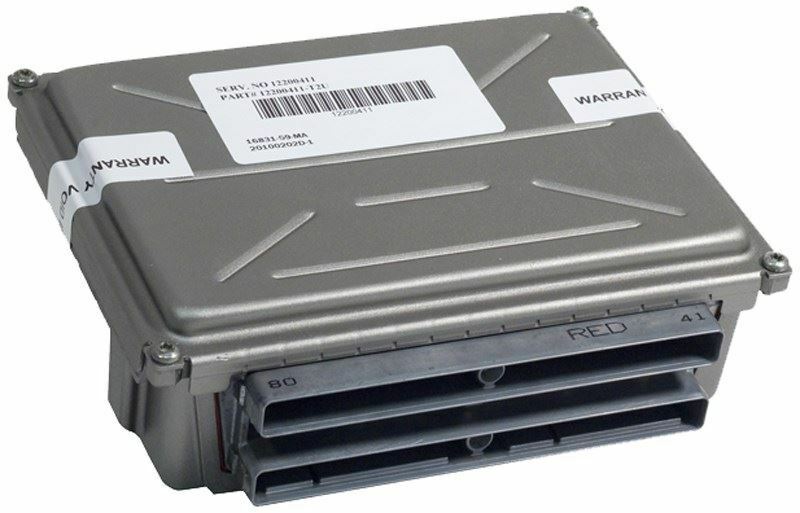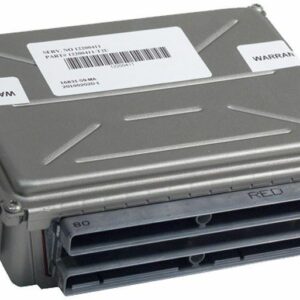Restore Peak Performance to Your GM Vehicle
Is your Chevrolet Venture, Pontiac Grand Am, or Buick LeSabre running rough, stalling unexpectedly, or showing a persistent Check Engine Light? These are classic signs of a failing Powertrain Control Module (PCM), the electronic brain of your vehicle. Don’t let a faulty computer keep you off the road. This replacement PCM is the reliable, straightforward solution to restore your vehicle’s engine management and transmission control to factory specifications.
With over 20 years of hands-on diagnostic experience, I’ve seen firsthand how a failing PCM can cause a cascade of frustrating, hard-to-diagnose issues. This isn’t just a part; it’s a fix for those headaches. We take the guesswork out of the repair by pre-programming this module with the latest GM software updates, specifically matched to your vehicle’s VIN. This means you get a component that’s ready to install right out of the box, saving you a costly trip to the dealership for programming.
Is Your GM Vehicle Showing These Symptoms?
- ✔ Persistent Check Engine Light (CEL)
- ✔ Engine stalling, sputtering, or misfiring
- ✔ Vehicle won’t start or has intermittent starting problems
- ✔ Poor fuel economy
- ✔ Harsh or erratic automatic transmission shifting
- ✔ Failed emissions test
- ✔ Diagnostic Trouble Codes (DTCs) such as P0601, P0602, P0605, or U-series communication codes.
From the Diagnostic Bay: The Phantom Misfire Case
A customer brought in a ’98 Buick Regal with what they described as a “phantom misfire.” It would run perfectly for days, then suddenly start stumbling at a stoplight, only to clear up again. No specific misfire codes were stored, just a generic P0300 (Random/Multiple Misfire) and an occasional U1000 (Class 2 Communication Malfunction). We chased our tails checking plugs, wires, and coils—all tested fine. On a hunch, I monitored the PCM’s live data stream. During one of the stumbling events, the injector pulse width data went haywire for a split second. The PCM itself was failing internally, corrupting its own commands. Swapping in a quality, correctly programmed PCM like this one solved the problem instantly. It’s a reminder that sometimes the issue isn’t the sensor, but the brain reading it.
Your Straightforward Installation Guide
Installing your new 1998 Venture Powertrain Control Module is a manageable job for a confident DIYer. Follow these general steps to get back on the road.
- Safety First: Always disconnect the negative terminal from your vehicle’s battery before beginning any electrical work.
- Locate the PCM: On these GM models, the PCM is typically found in the engine compartment, often inside the air filter housing, or sometimes under the passenger side of the dashboard.
- Disconnect the Harnesses: Carefully unclip the wiring harness connectors from the old module. These connectors have locking tabs that need to be released before pulling. Avoid forcing them.
- Remove the Old Module: Unbolt the old PCM from its mounting bracket and remove it from the vehicle.
- Install the New Module: Mount your new, pre-programmed PCM in the same location and secure it with the original hardware.
- Reconnect Everything: Firmly plug the wiring harnesses into the new module until they click into place. Reconnect the negative battery terminal.
- Perform Security Relearn: Some GM vehicles of this era require a security or crankshaft position (CASE) relearn procedure after PCM replacement. This can often be done without special tools (e.g., turning the key to ‘ON’ for 10-15 minutes). Consult a service manual for your specific model’s procedure.
Verified Compatibility for Your GM Vehicle
This module is a direct replacement for service numbers 09356741, 16236757, 9357034, 9357440, and 9366314. It is guaranteed to fit the following models:
- Alero: 1999 (3.4L)
- Achieva: 1998 (3.1L)
- Bonneville: 1998
- Camaro: 1998 (3.8L)
- Century: 1998 (3.1L)
- Cutlass: 1998, 1999
- Eighty Eight: 1998
- Firebird: 1998 (3.8L)
- Grand Am: 1998 (3.1L), 1999 (3.4L)
- Grand Prix: 1998
- Intrigue: 1998
- LeSabre: 1998 (3.8L)
- Lumina Car: 1998
- Malibu: 1998 (3.1L)
- Monte Carlo: 1998
- Park Avenue: 1998 (3.8L)
- Regal: 1998
- Riviera: 1998 (3.8L)
- Silhouette: 1998
- Skylark: 1998 (3.1L)
- Trans Sport: 1998
- Venture: 1998 (3.4L)
Frequently Asked Questions
How does the VIN programming work?
After you complete your purchase, you will need to provide us with your 17-digit Vehicle Identification Number (VIN). Our technicians use this VIN to access the latest official GM software for your exact vehicle configuration. We flash this software onto the module before shipping it, ensuring it’s a perfect match for your car.
Is this part difficult to install myself?
For most DIYers with basic tools, this is a very manageable installation. The most important steps are disconnecting the battery and being careful with the wiring connectors. Since the programming is already done, you avoid the most complex part of the job.
Will I need to do a CASE relearn after installation?
It is highly recommended. A Crankshaft Variation Relearn (CASE) procedure synchronizes the PCM with the crankshaft position sensor. While the vehicle may run without it, performing the relearn is crucial for accurate misfire detection and optimal engine performance. Many resources online show how to perform this simple procedure.
What is the difference between a PCM and an ECM?
The terms are often used interchangeably. ECM (Engine Control Module) traditionally controlled only the engine. PCM (Powertrain Control Module) controls both the engine and the automatic transmission. For the vehicles listed, this module functions as the PCM.
Is this a used part?
This is a high-quality, inspected, and tested recycled OEM part. Each unit is verified to be fully functional before being programmed and shipped, offering OEM reliability at a fraction of the cost of a new part from the dealer.



